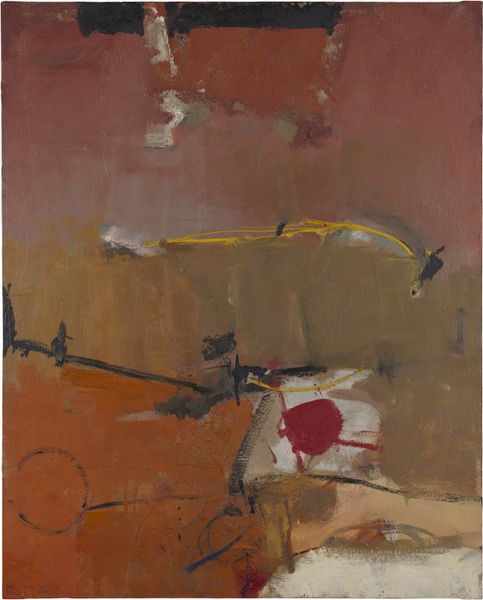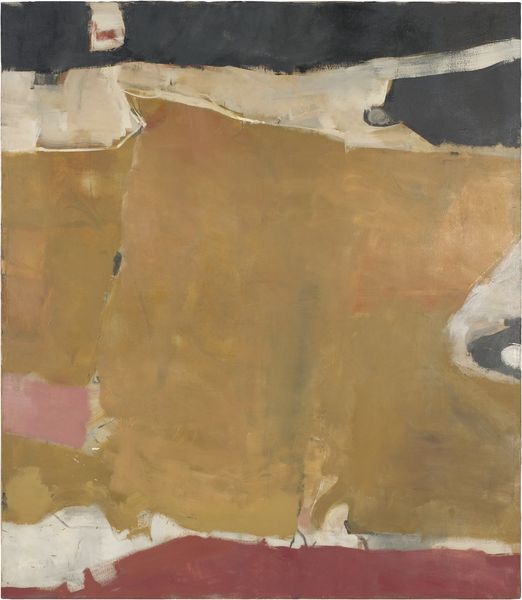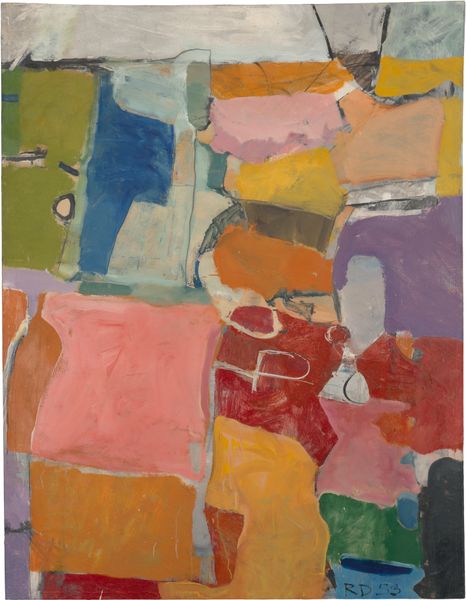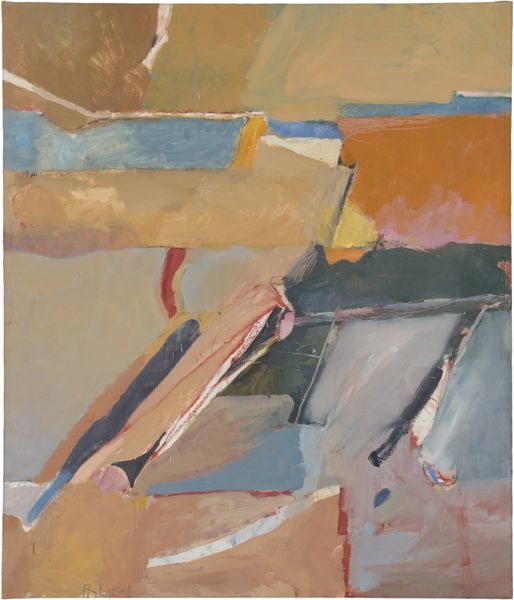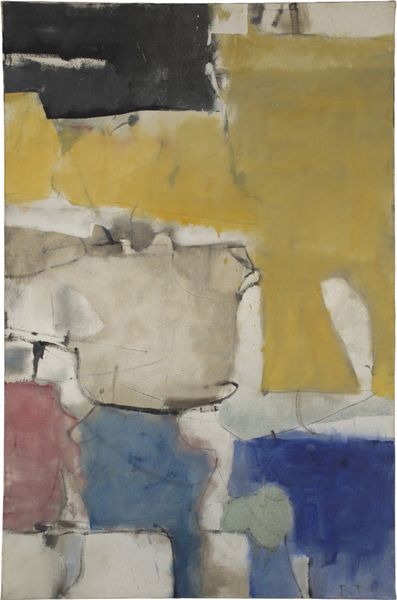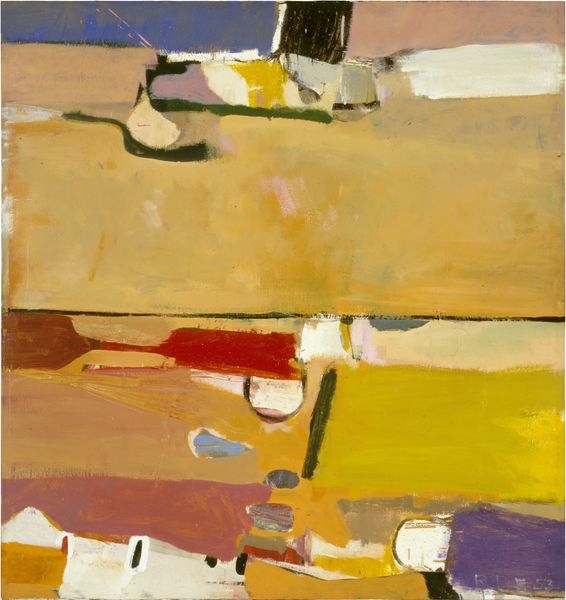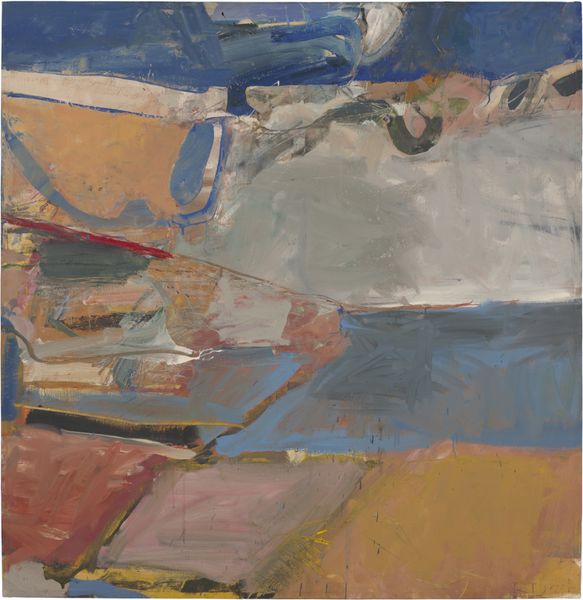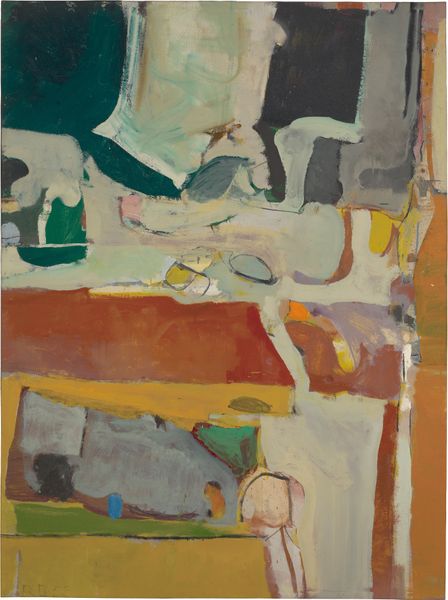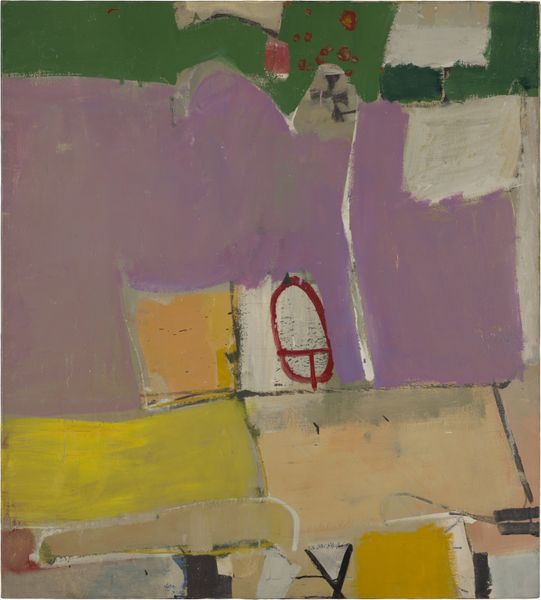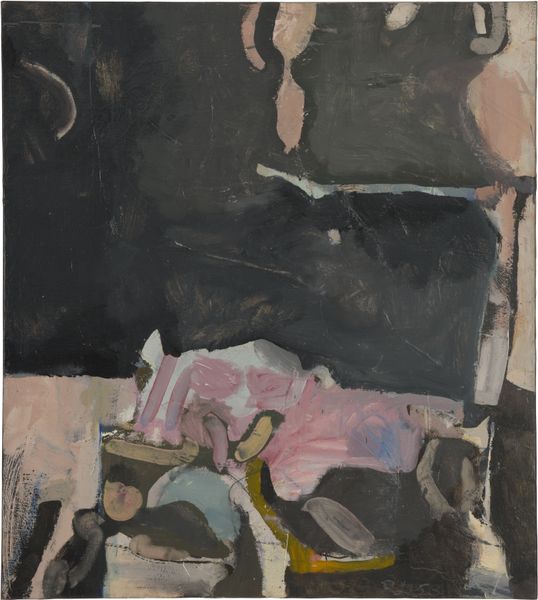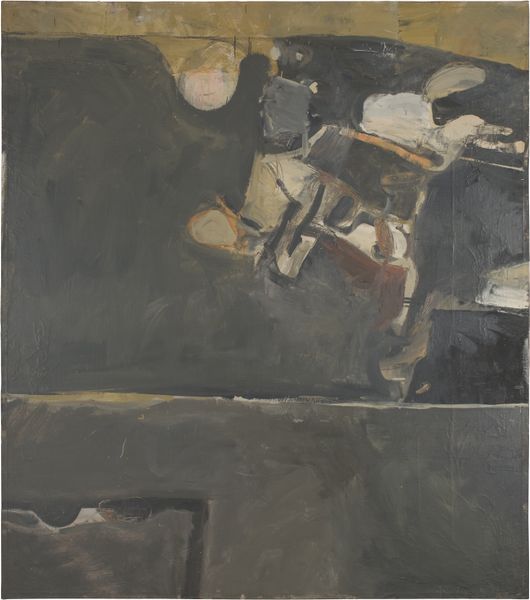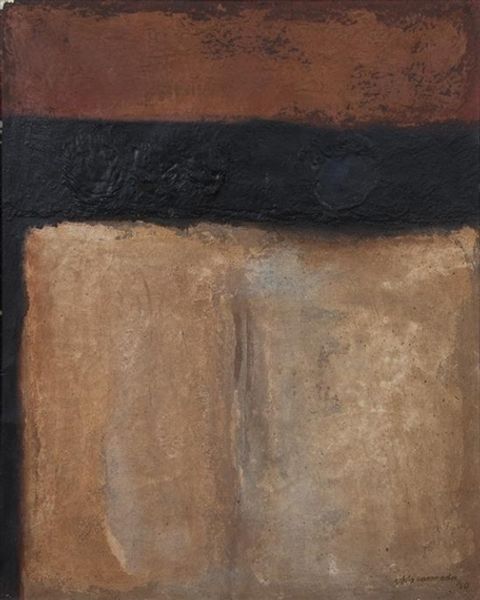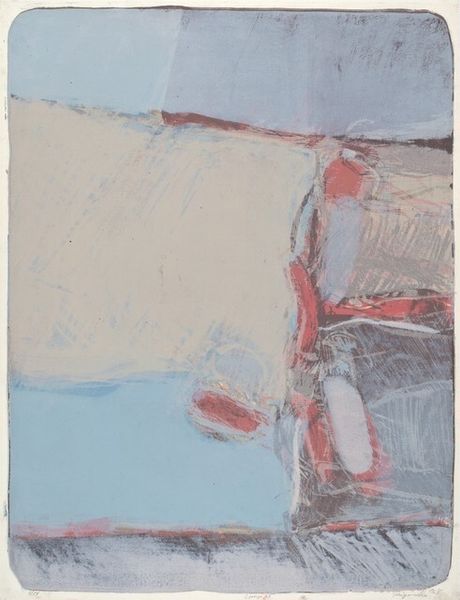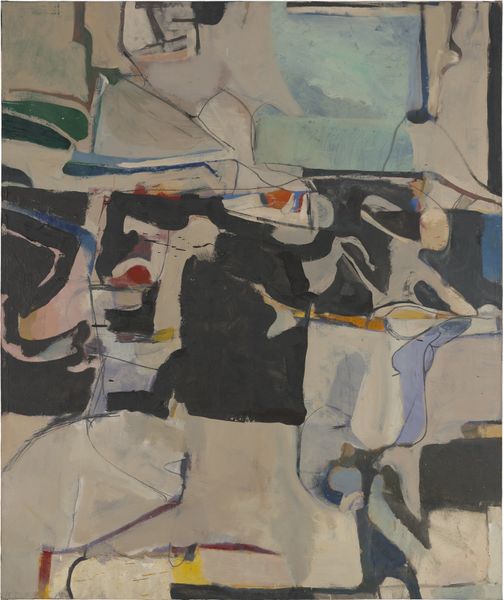
oil-paint
#
abstract-expressionism
#
water colours
#
oil-paint
#
landscape
#
oil painting
#
bay-area-figurative-movement
#
acrylic on canvas
#
underpainting
#
abstraction
#
watercolor
Dimensions: 143.2 x 113.7 cm
Copyright: Richard Diebenkorn Foundation
Editor: We are looking at "Albuquerque #11", an oil painting crafted by Richard Diebenkorn in 1951. The canvas is dominated by muted pinks and yellows bisected by a thick horizontal dark band. What is compelling is how, through abstract blocks of color, Diebenkorn evokes a vast landscape. What compositional elements strike you as most significant? Curator: Note the primacy of horizontal lines, particularly the stratified bands of colour. This creates a spatial ambiguity. Consider the tension created between the flat application of the paint and its illusion of depth. Observe the texture. It reveals layers beneath the surface – an underpainting – betraying Diebenkorn’s process. Editor: The tension is fascinating. It feels very deliberate. So, do you read these planes as purely formal elements, or do you see any allusions to the external world? Curator: Form is paramount. One may interpret the bands as landscape, of course, a visual effect Diebenkorn encouraged. But, notice the way each colour block engages with the others. It would be a mistake to privilege representation over these visual relationships. The chromatic scale moves through the canvas horizontally, a slow pulse as your eyes climb vertically to capture what isn't fully provided for you. The success is that Diebenkorn avoids anything in the picture of any distinct, visual import and relies only on tone to lead our eyes. Editor: That's helpful. So, while the title nods to a specific place, the painting really invites us to appreciate the dialogue of color and form in its own right. Curator: Precisely. It's the aesthetic experience itself, triggered by Diebenkorn’s particular arrangement, which commands our attention and not a duplication of an exterior place.
Comments
No comments
Be the first to comment and join the conversation on the ultimate creative platform.
